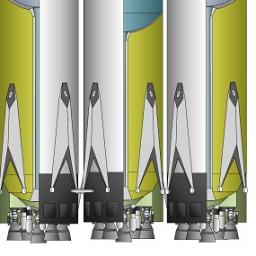
Last year, the Federal Aviation Administration (FAA) issued a fine of $10,000 to Raphael Pirker, known in the drone community as "Trappy". Pirker was the first, and to date, only drone pilot fined by the FAA. The fine was
overturned yesterday by Judge Patrick Geraghty of the National Transportation Safety Board, who said in his decision that, "there was no enforceable FAA rule" governing the use of model aircraft.
"The delay in implementing an effective set of rules for [drones] has caused real potential danger, such as the thought that right now there seems to be no regulation on airspace below 400 feet."
SoylentNews.org (including li694-22.members.linode.com) is offline at the moment. The site currently returns the following:
Error 503 Service Unavailable
Service Unavailable
Guru Meditation:
XID: 1060599780
Varnish cache server
There has been a lot of drama going on with SoylentNews lately. The nominal founder, Barrabas, wanted to create a for-profit business, but the majority of volunteers wanted to avoid the potential for another sell-out which lead to the Slashcott in the first place. Due to conflicts with those volunteers, Barrabas has sold the domain to a new and unknown owner. If a deal between the mystery domain owner and NCommander and his volunteer 'Overlords' cannot be reached, the Site Formerly Known as SoylentNews can be
found on the default Linode address.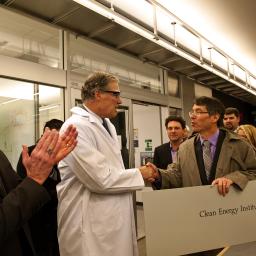
Scientists from the
University of Washington have built the thinnest-known LED that can be used as a source of light energy in electronics. Most consumer electronics use three-dimensional LEDs, but these are 10 to 20 times thicker than the LEDs being developed by the UW.
The UW's LED is made from flat sheets of the molecular semiconductor known as tungsten diselenide, a member of a group of two-dimensional materials that have been recently identified as the thinnest-known semiconductors. Researchers use regular adhesive tape to extract a single sheet of this material from thick, layered pieces in a method inspired by the 2010 Nobel Prize in Physics awarded to the University of Manchester for isolating one-atom-thick flakes of carbon, called graphene, from a piece of graphite.
In addition to light-emitting applications, this technology could open doors for using light as interconnects to run nano-scale computer chips instead of standard devices that operate off the movement of electrons, or electricity. The latter process creates a lot of heat and wastes power, whereas sending light through a chip to achieve the same purpose would be highly efficient.
Four new
ozone-killing gases have been found in the atmosphere. The new gases found, three chlorofluorocarbons (CFC) and one hydro-chlorofluorocarbon (HCFC), seem to be man-made since they where not around until the 1960s.
Lead researcher Dr Johannes Laube from UEA's School of Environmental Sciences said: "Our research has shown four gases that were not around in the atmosphere at all until the 1960s which suggests they are man-made."
"CFCs are the main cause of the hole in the ozone layer over Antarctica. Laws to reduce and phase out CFCs came into force in 1989, followed by a total ban in 2010. This has resulted in successfully reducing the production of many of these compounds on a global scale. However, legislation loopholes still allow some usage for exempted purposes."
"The identification of these four new gases is very worrying as they will contribute to the destruction of the ozone layer. We don't know where the new gases are being emitted from and this should be investigated. Possible sources include feedstock chemicals for insecticide production and solvents for cleaning electronic components."
"What's more, the three CFCs are being destroyed very slowly in the atmosphere - so even if emissions were to stop immediately, they will still be around for many decades to come," he added.
Well-known Linux vendor and IT shop Wind River knows the "Internet of Things" is just around the corner, and is
positioning its interesting VxWorks Real Time Operating System (RTOS) to be there when it happens. VxWorks is already in use on embedded systems around the world, and it might be coming to a toaster near you soon.
If you have not heard of VxWorks,
Wikipedia has more info about the Intel-owned company that is quietly putting its 'Intel Inside' mark on over 1.5 billion devices, including NASA's Curiosity rover on Mars.
Wind River redesigned VxWorks so it features two kernels, one for large processors and the other, a micro-kernel, for smaller processors, like the kind that would power edge devices with low compute capacity. The micro-kernel is only 20KB, and can run on 32-bit processors (though not 8-bit or 16-bit processors).
How much longer before our refrigerators flash 'insert coin'?
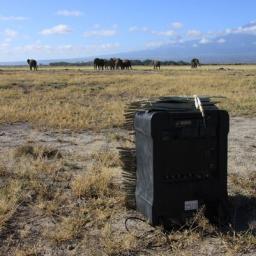
The Los Angeles Times reports
elephants distinguish human voices by sex, age, ethnicity according to a new study.
USA Today notes
Maasai men, who may hunt the elephants, were treated differently than Kamba men, who are farmers. When the voice belonged to a Maasai man, the elephants tended to sniff the air and bunch closely together for protection. But when the voice was a Kamba man's, the elephants were more nonchalant. The elephants also reacted with relative calm to the voices of Maasai women and boys, who, unlike Maasai men, generally don't take part in spearing elephants.
Voice of America says the study is available now but does not appear posted on the Proceedings of the National Academy of Sciences site yet.
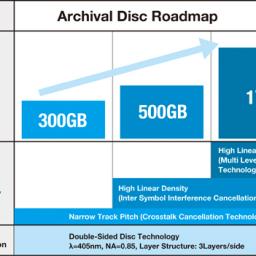
Looks like Sony and Panasonic are teaming up again for the new
Archival Disc format. The new disk format will premier at 300 GB with plans to increase to 1 TB using signal processing advancements. Double sided, 3 layers each side, and 405 nm optical wavelength - maybe these new 4K TVs will finally have some 4K source media.
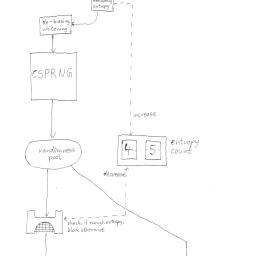
The differences between /dev/random and /dev/urandom have spawned some misconceptions.
This article attempts to explain some of the myths surrounding this perplexing random number device.
Also of interest, is a
report on weak entropy in key generation, especially during bootup, and
another report on the aftermath of Debian's recent OpenSSL vulnerability.
 Last year, the Federal Aviation Administration (FAA) issued a fine of $10,000 to Raphael Pirker, known in the drone community as "Trappy". Pirker was the first, and to date, only drone pilot fined by the FAA. The fine was overturned yesterday by Judge Patrick Geraghty of the National Transportation Safety Board, who said in his decision that, "there was no enforceable FAA rule" governing the use of model aircraft.
Last year, the Federal Aviation Administration (FAA) issued a fine of $10,000 to Raphael Pirker, known in the drone community as "Trappy". Pirker was the first, and to date, only drone pilot fined by the FAA. The fine was overturned yesterday by Judge Patrick Geraghty of the National Transportation Safety Board, who said in his decision that, "there was no enforceable FAA rule" governing the use of model aircraft.



